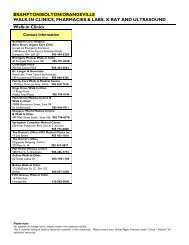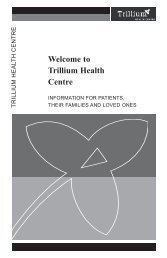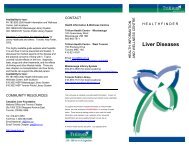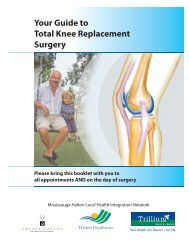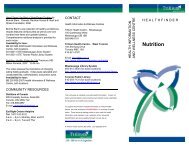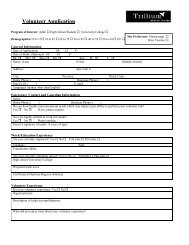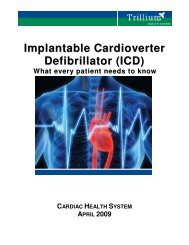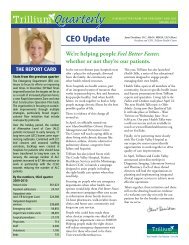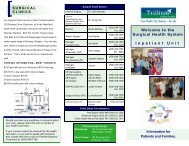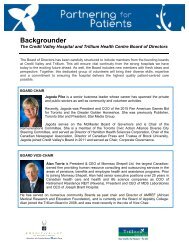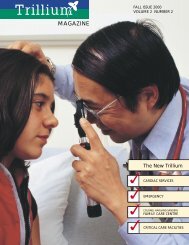We've come a long way . . . together Looking back - reflections from ...
We've come a long way . . . together Looking back - reflections from ...
We've come a long way . . . together Looking back - reflections from ...
- No tags were found...
Create successful ePaper yourself
Turn your PDF publications into a flip-book with our unique Google optimized e-Paper software.
Reflections(cont’d <strong>from</strong> page 2programs (cardiac and stroke). It fosters recruitmentof the best of the brightest of health care professionalswho bring their leadership and expertise.However, this also poses challenges with risingcosts and funding pressures as drugs, equipmentand patient volumes increase.”Ms. Power also recognizes that demographics withinthe region will put pressure on the program, aswill maintaining the momentum, and facing newand competing priorities.Paul StonerOperations ManagerMississauga Central Ambulance CommunicationsCentre, Emergency Health Services, MOHLTCPaul Stoner sees the signing of the bypassagreement as a major accomplishment of theNetwork. “It has be<strong>come</strong> a template for similaragreements and it appears to be working very well.Our paramedics cover a wide geographic area andfollow very specific protocols when dealing withstroke patients, and we know that patient out<strong>come</strong>sare improved.”The possible downside of the agreement, and achallenge yet to be resolved, is the timely transfer ofpatients <strong>back</strong> to their home communities, which isimpacted, for various reasons, by the availability ofbeds and patient transportation services.Sandra Shaw and Meredith UngaraPatient Care ManagersWilliam Osler Health CentreBoth managers have experienced the benefits ofenhanced clinical educational opportunities andfunding that have been offered through the Network,for themselves and their staff.“Education and best practice guidelines, thecollaboration, the sharing of experiences andnetworking between colleagues and facilities, haveall contributed to improved clinical care. Staffbe<strong>come</strong> energized when they see results.” They alsoacknowledge the skills and knowledge of LindaKello<strong>way</strong>, Regional Stroke Educator, “who is atremendous resource to us.”Being part of regional research projects is anotheradvantage of Network partnership, giving front-linehealth care professionals the opportunity to share inthe improved patient out<strong>come</strong>s and practice development,as well as keeping everyone current.Both believe that increased communication of theNetwork’s successes will benefit others. “We needto be sharing our experiences more, so others don’thave to re-invent the wheel.” They also see theneed for benchmarks for monitoring and evaluatingprograms; increased emphasis on stroke preventionmore community-based after-stroke programs, andongoing support and funding for continuingeducation and research.Mark Your CalendarsMonday, September 27, 2004Best Practices SymposiumToronto - location to be announcedFunded by the MOHLTC OntarioStroke Strategy and hosted by thefour Regional Stroke CentresFor physicians, nurses, rehab professionalsworking with stroke patients who are interestedin the latest evidence-based practices instroke care and the 19 provincial strokeguideline recommendations



